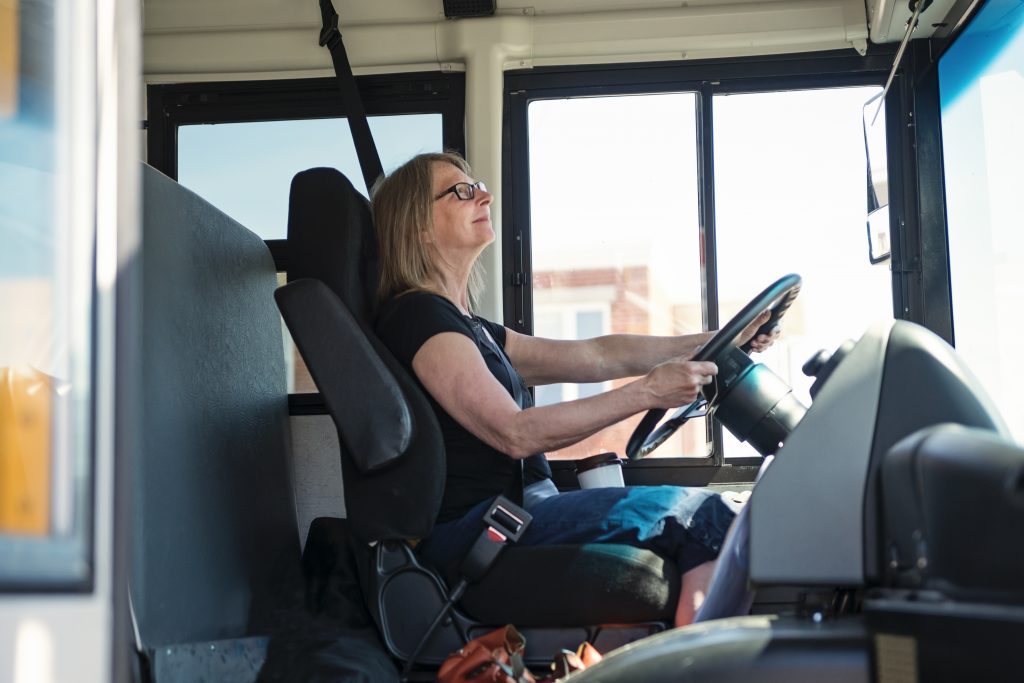The problem: lack of diversity and driver shortages
Driver shortages are a well-known problem in the mass transportation industry both in the UK and globally, an issue that underscores the importance of hiring and retaining drivers and ensuring their well-being.
One of the manifestations of this problem is lack of gender diversity. According to the International Transport Forum, women account for less than 15% of the global transport workforce. Similar proportions are reflected when we specifically look at women who are bus drivers. Another problem that the bus industry faces is the amount of bus drivers who leave after their training period, a source of cost inefficiency. These issues have been acknowledged for many years. So how can we encourage more women to become bus drivers, and how can we encourage all bus drivers to remain in their careers? The answer lies in solutions such as fleet driver retention software that supports scheduling flexibility, recognition and fair rostering.
Learn more about the case for roster optimization
Rosters and duties may hold the answer
Public transportation work is demanding – dealing with passengers, interacting with a diverse population, working at night in downtown areas and more. It requires drivers to commit ahead of time to duties (the daily work requirement) and rosters (a weekly combination of duties). Public transportation planners and schedulers have known this for a long time and have therefore focused on creating schedules and rosters (rotas) that can offer a better work-life balance for drivers. For instance, creating 40-hour workweeks or avoiding split shifts as much as possible.
Yet, most scheduling platforms make use of these ideas on a general level – creating an average of duties/rosters that would fit an average driver (but won’t work as well for a single carer or semi-retired driver). The technology couldn’t really support more than that. What would happen if we instead tried to define different rosters that would fit different lifestyles? A roster that would better fit the needs of someone that just finished driver training to discover the rosters don’t fit with their home lives, a roster that would better fit the needs of a single carer that needs to be home and work and can’t always fit their lives into the confines of the “average roster”?
The concept: Lifestyle Rosters
At Optibus, we have actively worked to produce a Lifestyle Roster solution; our unique algorithms and unique ability to optimize rosters and roster groups provides the foundation for checking scenarios with regards to the creation of such rosters.
Every driver has a personal life, which ideally, they would like their career to accommodate. We have seen many instances where drivers must leave the profession, in order to prioritise their family life and/or personal obligations. We would like drivers to be able to work duties which would not interfere with obligations and have more consistent and predictable rosters.
The solution
Creating a Lifestyle Roster is an iterative process. The technology it uses is a planning and scheduling platform that requires the insertion of preferences with regards to the rosters (such as rest times, consecutive days off and more) and also the definition of different roster groups, where drivers are categorized as carers, safe route drivers, semi-retired etc, generating morning rosters, evening rosters, carer rosters etc. It may require the operating company to continuously analyse their workforce and to run multiple scenarios, which shouldn’t be too difficult. Once the duty types have been created and optimized, creating a lifestyle roster becomes rather simple.
Let’s consider this Gantt chart, showing different duties. These duties can pose a challenge for those with personal obligations. This is because some of them are very long (up to 11 hours in length), which is not ideal for the majority of people. Many of the early duties still do not finish early enough for parents to be able to pick up their children from school.

Figure 2: The norm
Here are the same trips with a lifestyle variation. You can see that there is a variety in the type of duties. This gantt consists of some shorter duties which would be ideal for the typical semi-retired driver. There are also early duties which would allow a carer to have the entire afternoon and evening off. Similarly, there are some late duties which allow for the driver to have the entire morning off. In addition, we have created some homogenous duties (duties that consist of one route) which would be considered ‘safe duties’

Figure 3: Optimised for driver lifestyles
Here’s what this looks like from the roster point of view:
Before creating lifestyle rosters, 30 rosters were distributed as follows:
• 27% were morning rosters
• 43% were afternoon rosters; and
• 30% were evening rosters
With lifestyle rosters, we added two more rosters, totaling 32, and created a variety of 7 types of rosters, so they can better driver needs:
• 9% were morning rosters
• 31% were afternoon rosters
• 13% were daytime rosters
• 28% were evening rosters
• 9% were midday rosters (for single carers)
• 6% were a split shift; and
• 3% (one roster) was a late roster
The future
The Lifestyle Roster is something that we hope would eventually become the norm for the entire transport industry. With Optibus, it is an opportunity to be equitable whilst cost efficient. We would like rosters that are beneficial for both the drivers and the business.







